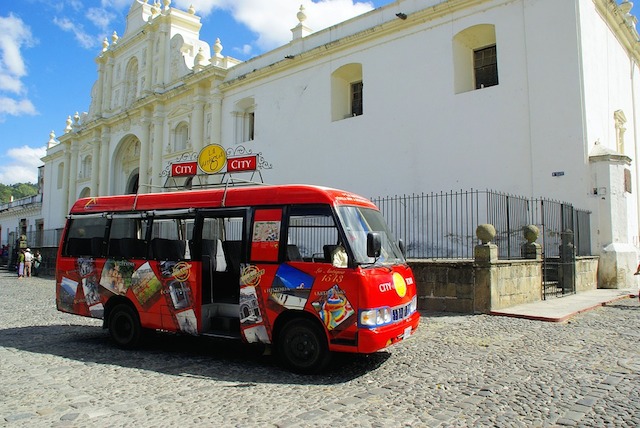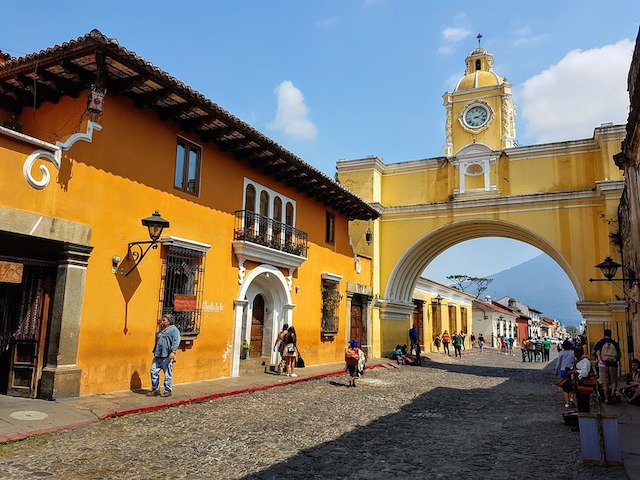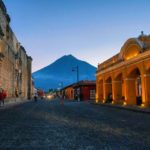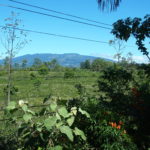What You Want to Know About Central America Travel

 It took two full days to get from Rio Dulce, Guatemala, to Utila, Honduras. Three buses, five colectivos (minibuses common for Central America travel), two taxis, a ferry, and a hostel in between. As is often the case in Central America, the distance on the map I looked at beforehand appeared deceivingly short. I arrived at the bus station the first morning, already sweating in the humidity, with one broken shoe, and was immediately informed that the bus was sold out. When I asked if there was another bus, the woman behind the counter stared at me, expressionless, for several seconds, and then said with much finality, “No.”
It took two full days to get from Rio Dulce, Guatemala, to Utila, Honduras. Three buses, five colectivos (minibuses common for Central America travel), two taxis, a ferry, and a hostel in between. As is often the case in Central America, the distance on the map I looked at beforehand appeared deceivingly short. I arrived at the bus station the first morning, already sweating in the humidity, with one broken shoe, and was immediately informed that the bus was sold out. When I asked if there was another bus, the woman behind the counter stared at me, expressionless, for several seconds, and then said with much finality, “No.”
I sat down, took off my backpack, had a few sips of water and took a few deep breaths. When I no longer felt like I might burst into tears of frustration, I tried again, choosing the words as carefully as possible in my mediocre Spanish. “I need to get to Copan, Honduras, today. Is there any other way to get to the border?” I asked.
She sighed, apparently resigned, and told me I’d have to take a bus to a town several hours away, and from there I could get to the border. It turned out that I could take a bus to that town, and then a colectivo to another town, and then another colectivo to another town, and so on until, four colectivos later, I arrived at the border. By then I was exhausted and it was dark.
I sat down on my backpack, not caring that I may have been exploding the bottle of conditioner in the outer pocket (I was), and when I got up, I discovered that I’d also sat in someone’s spat-out chewing gum.
I always try to avoid traveling alone after dark, especially in unknown areas of Honduras, but by then there was nothing I could do. Luckily Copan is quite safe. A tour bus had arrived at the border just before I did, so I was last in a slow-moving line of about 40 people, all having their passports stamped by one very tired looking customs official. I sat down on my backpack, not caring that I may have been exploding the bottle of conditioner in the outer pocket (I was), and when I got up, I discovered that I’d also sat in someone’s spat-out chewing gum.
By the time I finally found a hostel in Copan (after being led there by a very drunk, very insistent man), the only thing in the world I wanted was a good shower. Fortunately, the water was hot. Unfortunately, there was an unsettling amount of pubic hair on the shower floor.
Day two went much more smoothly. I only had to take two buses and a taxi to get from Copan to la Ceiba, where the ferry terminal is, and from there it was smooth sailing. The only low point was a man vomiting all over the back of the first bus, but luckily it happened just as everyone was standing up to get off. In the end, it was worth every penny, drop of sweat and unshed tear of frustration.
I’ve now been in Utila over a week, and have fallen in love with scuba diving. I came here to get my open water certification, and ended up going straight into the next course after that. There is nothing in the world like the sensation of breathing under water, of being able to spot the tiniest, most brightly colored fish swimming through the most intricate nooks and crannies of the reef, explore a sunken ship, or hover in the water to watch a hawksbill sea turtle feeding amidst the coral. Doing things like this, in places like this, is the reason people travel. Getting to places like this is another story.
The Lowdown on Central America Travel
While backpacking Central America, one spends hours upon hours in transit: riding buses, waiting for buses, getting to buses, taking taxis, taking shuttles, taking tuk tuks, taking ferries, boats, canoes, riding in colectivos, riding on top of colectivos, riding in the backs of pickup trucks–you name it, you’ll probably have the chance to experience it in Central America.
Chicken Buses
Most of the time, when it comes to long overland journeys, you will choose between public and private transportation. Chicken buses are the cheapest, and most popular with local populations. One downside is that they are slow, sometimes taking twice as long as direct buses. They stop along the road to pick up anyone who waves them down. You’ll have to wait for an old woman to find space for her six crates of live chickens, or for someone to tie a pair of sheep to the roof, or for the bus driver to take a small detour in order to have a quick lunch with his cousin. It will most likely be entertaining, at least for the first hour or two.
Apart from being slow, another negative to chicken buses is that they can be dangerous. In many places, including Guatemala, Honduras, El Salvador and Nicaragua, they should generally be avoided at night, particularly if traveling alone. Even during the day, theft is not unlikely. Vigilance is important. Pickpocketing and bag cutting are distinct possibilities. Chicken buses are often very crowded and you may get a few dirty looks for keeping all your baggage on you–however, if you put it below the bus or on the roof, unsupervised, every stop is an opportunity for theft.
All of this, of course, depends on where you are. In Guatemala, for example, hostels and travel agencies all strongly recommend against using chicken buses and provide shuttle services instead. While, for the most part, I took their advice and shelled out the money for shuttles, I did have a slight suspicion they might be overplaying the dangers of public transportation in order to cash in selling the shuttle tickets.

What You Want to Know About Central America Travel
Colectivos
My last few days in Guatemala, spent in and around Rio Dulce, I did end up using public transportation, mainly colectivos, which are essentially miniature, speeding chicken buses. They are meant to seat about 16 people, but usually contain around 24, not counting six to eight small children and at least one breast-feeding baby, and give or take four or five people riding on the roof with the luggage until the driver nears a police checkpoint, at which time they squeeze into the colectivo, or, if that is literally physically impossible, they hang out of the open sliding door. I have only colectivos during the day and in one part of the country, but they felt quite safe, so long as you don’t mind having very little leg (or arm, or shoulder) room.
One step up from chicken buses and colectivos are the privately owned bus companies. They can save quite a lot of time and quite a lot of stress. Private buses very greatly in price and comfort, from fairly cheap to on the spendier size, from a bit grimy and cramped to spacious, clean and air-conditioned. I have found the cheap ones to be quite safe and reliable enough.
When stowing your luggage, inform the porter of your destination and he will put it in the subsequent compartment, so that all of the bags aren’t accessible to anyone at any stop. Often they will use tags, and give you a stub to show with a corresponding number. A lot of times, private shuttles advertise having WiFi, movies, free snacks, or a certain number of stops. You will quickly learn that these claims are very rarely, if ever, accurate.
I have yet to encounter a bus or shuttle with WiFi–and to be completely honest I can’t see how it’s necessary. If there is air conditioning and every seat isn’t filled, I count myself lucky. Sometimes, perhaps for especially long journeys, overnight buses, or simply those times when you just can’t deal with another cramped, less than pristine bus ride, it might be worth it to spring for a more luxurious bus.
Which mode of transportation should you choose? When deciding on your mode of transportation, there are several factors to consider.
What You Want to Know About Central America Travel
1. Safety
Transportation varies greatly throughout Central America. Some countries have amazing public transportation systems. From San Jose, Costa Rica, you can almost always get anywhere in the country on a very comfortable bus in less than seven hours, for less than $15 US. In other places, it’s safer to opt for private shuttles through hostels or travel agencies.
2. Budget
When planning a budget for a trip, transportation costs are important to incorporate and account for. You should also know your own limits. I have noticed that, while traveling can often bring out the best in people, the stressful situations we often find ourselves in while in transit can also bring out the worst in people; if you don’t know your limits when you begin traveling, chances are you will quickly learn. If you’re someone who gets stressed or impatient while traveling, it might save you a lot of discomfort to fork out for private transport.
3. Time
Private transportation is almost always considerably faster than public. Ask yourself, how fast do I need to get there? How fast do I want to get there? If you want or need to be somewhere relatively quickly, opt for a private bus or shuttle. If you are the patient type and have plenty of time, public buses may be a good choice.
As someone who loves traveling, I don’t mind all of the actual traveling, on foot or by bus, boat, car, truck, plane or train. Sometimes the trip is cramped, hot, or several hours longer than you think you can bear, but going to new and amazing requires getting to new and amazing places. The journey is part of the adventure.








